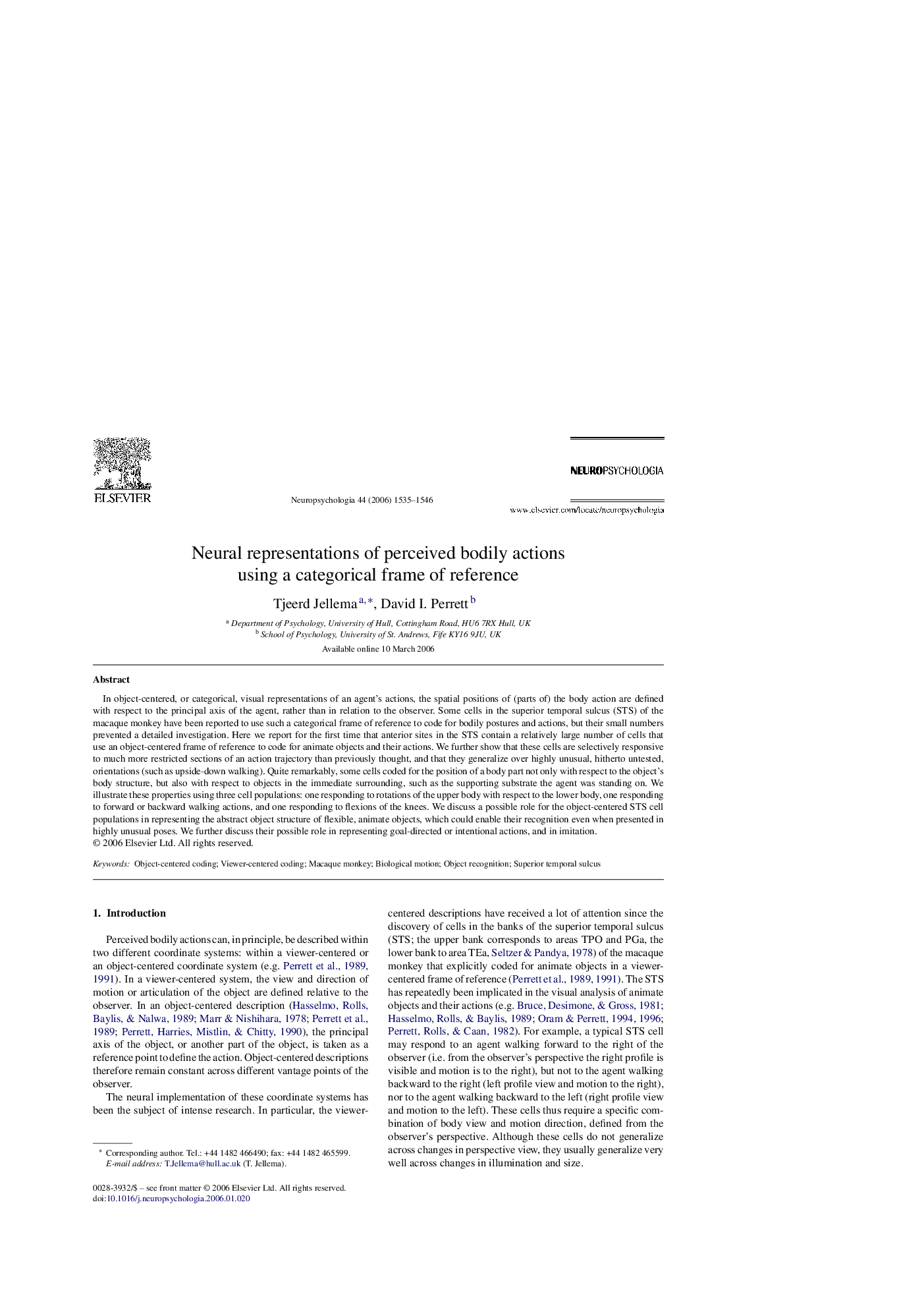| کد مقاله | کد نشریه | سال انتشار | مقاله انگلیسی | نسخه تمام متن |
|---|---|---|---|---|
| 945624 | 925799 | 2006 | 12 صفحه PDF | دانلود رایگان |

In object-centered, or categorical, visual representations of an agent's actions, the spatial positions of (parts of) the body action are defined with respect to the principal axis of the agent, rather than in relation to the observer. Some cells in the superior temporal sulcus (STS) of the macaque monkey have been reported to use such a categorical frame of reference to code for bodily postures and actions, but their small numbers prevented a detailed investigation. Here we report for the first time that anterior sites in the STS contain a relatively large number of cells that use an object-centered frame of reference to code for animate objects and their actions. We further show that these cells are selectively responsive to much more restricted sections of an action trajectory than previously thought, and that they generalize over highly unusual, hitherto untested, orientations (such as upside-down walking). Quite remarkably, some cells coded for the position of a body part not only with respect to the object's body structure, but also with respect to objects in the immediate surrounding, such as the supporting substrate the agent was standing on. We illustrate these properties using three cell populations: one responding to rotations of the upper body with respect to the lower body, one responding to forward or backward walking actions, and one responding to flexions of the knees. We discuss a possible role for the object-centered STS cell populations in representing the abstract object structure of flexible, animate objects, which could enable their recognition even when presented in highly unusual poses. We further discuss their possible role in representing goal-directed or intentional actions, and in imitation.
Journal: Neuropsychologia - Volume 44, Issue 9, 2006, Pages 1535–1546